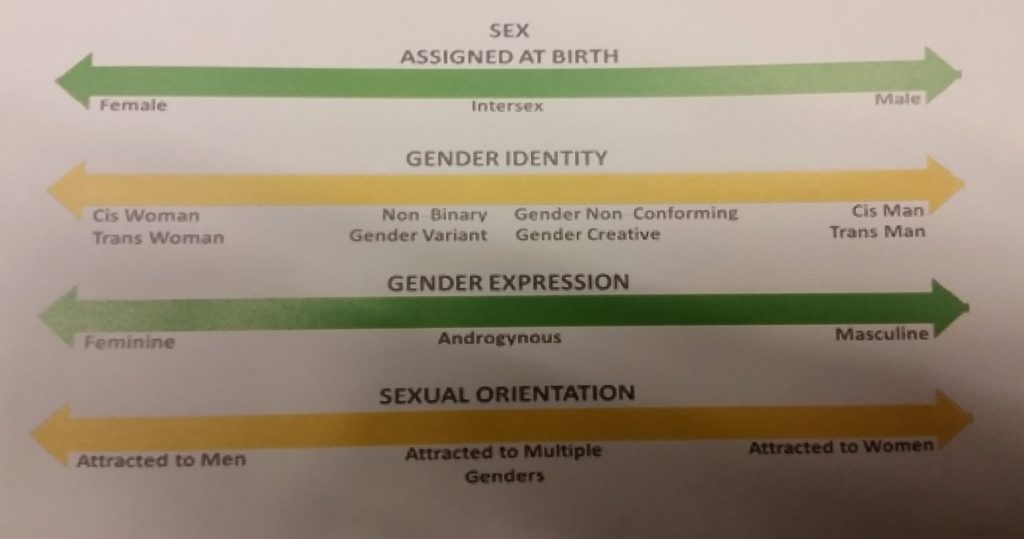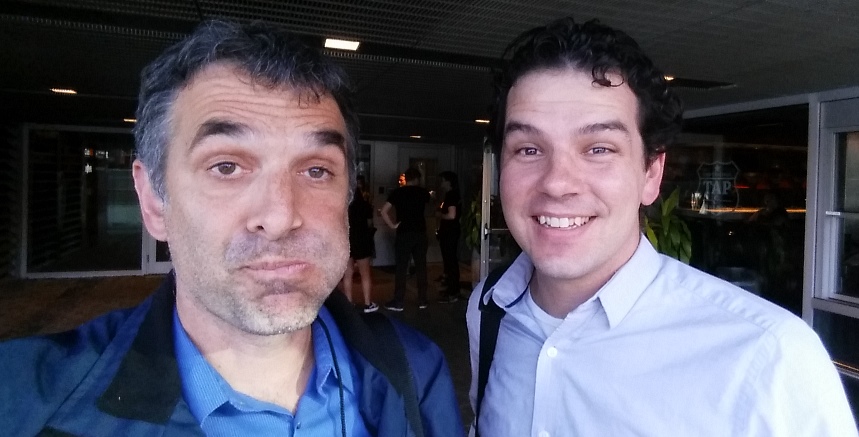Wow. What a week. Much to talk about, too much to do, but first things first, my report on the happenings of Monday’s Council.
This meeting started with an Opportunity for Public Comment:
Five Year Financial Plan (2017-2021) Amendment Bylaw No. 7938, 2017
The City operates on a budgeting process that requires all expenditures to be included in a Five-Year Financial Plan. Every once in a while, we vary from that budget enough – because of extenuating circumstances or a shift in policy – that it is appropriate for us to amend it through a Bylaw. The interested public always has an opportunity to ask questions related to this amendment, as they do with the annual 5-Year Plan update.
The Amendments in question here comprise:
- The Arenex collapse means we need to spend some money on clean-up, on a replacement structure, and some other ancillary costs (most of this is covered by our insurance)
- We got a grant to do some sewer separation work in Sapperton. This is money in (the grant) and money out (we paid for the work to be done) but it still needs to be included in our budget
- The Ewen Street work is over budget, and we are pulling money from reserves to cover it (since Queensborough DCCs won’t cover it). There is also some GVRD sewer renewal money here, which again is money we will recover, but it needs to be shown in the budget
- The scope for library renovations has expanded somewhat, so we need to allocate some money from our existing borrowing authority to make sure we have enough to cover the project – now underway!
No-one came to speak to these amendments, and we received no correspondence on them. Council moved to give the amendment bylaw three readings.
We then had a Report for Action:
Canada Games Pool/Centennial Community Centre Project – Aquatic and Community Centre Feasibility Study
We haven’t reported out a lot of work from the Canada Games Pool task Force, but there has been quite a bit of work done by Staff and our Consultants on responding to the public consultation that occurred earlier in the year.
I think I need to throw this over to another much longer blog post, as there is a lot here, but the short version is: we have a pretty good idea of what type of program best balances what the community told us they want (thinking ahead a few decades), and what we reasonably think the community can afford given the various funding sources available to us. A little more than 100,000 square feet, a little less than $100 Million.
The steps ahead are to hear back from the community if this is totally the wrong direction, this is, after all, the biggest capital project in the City’s long history. This conversation in the community will begin early in the new year. We also need to do some technical work to provide better cost estimating and firm up the capital plan impacts. More to come!
The following items were then Moved on Consent:
2018 Heritage Grant Recommendations
The City has a budget of $25,000 for Heritage Grants. We have a Committee appointed by Council to review and make recommendations for these Grants. We received requests totaling $29,905, and the Grant Committee recommended awarding a total of $24,905. Council approved.
2018 Environmental Grant Recommendations
The City has a budget of $20,000 for Environmental Grants. We have a subcommittee of the Environment Advisory Committee who review and make recommendations to Council on the applications. We received requests totaling $25,090, and the Committee recommended awarding a total of $20,000. Council approved the recommendation.
2018 Community Grant Recommendations
The City has a budget of $75,000 for Community Grants. We have a Committee appointed by Council to review and make recommendations for these grants. We received requests totaling $86,357, and the Committee recommended awarding a total of $48,286. Council approved the recommendation.
2018 Amateur Sports Fund Committee Grant Recommendations
The City has a budget of $35,000 to support Amateur Sports through grants. We have a Committee appointed by Council to review and make recommendations for these grants. We received requests totaling $81,939, and the Committee recommended awarding a total of $35,000. Council approved the recommendation.
Heritage Register Update 2017
The City maintains a registry of designated heritage assets, which needs to be updated, usually as new assets are added, but occasionally when assets are removed.
I’m sad to have seen the Beech tree on Third and Ash come down. It is one of three majestic beech trees on that block (all visible from my house!). However, the reality is that trees don’t last forever, and this one was in decline, in what the City arborist deemed was “senescence” – or old age to the point where decline and death were imminent.
Queen’s Park Heritage Conservation Area: Proposed Community Consultation on Zoning Based Incentives for Protected Properties
Since the Heritage conservation Area was formally adopted by the City, staff have been working on various aspects of the implementation plan, including doing some analysis of the impacts (imagined, projected, or realized), and are putting together incentive programs to help reduce the potential burden of heritage protection on some homeowners. It is actually a complicated process, and relies on local data collection and analysis compared to similar regions arounf North America. An early round of public consultation is beginning right now.
Queen’s Park Washroom and Concession Building
The City is replacing the bathrooms and concession stand in Queens Park. The building is at the end of life, and it is a well-used facility. This will be the first time the City builds exclusively gender-neutral bathrooms in a public building, and the accessibility aspects will be at a much higher level than most previous city buildings. This report shows some of the design elements, and gives us an idea of the plans ahead!
City Hall Community Garden
The Community Garden at City Hall has definitely raised a lot of conversation. Parks did a little extra here with some public space enhancements around the Garden, and the Garden was fully subscribed this year, and was an incredible community meeting place all summer. I walked by there regularly, and it was great to see so many people of all ages working the gardens, but mostly meeting, talking, and sharing their time. This is what “community building” looks like.
1002, 1012, 1016 and 1020 Auckland Street: Consideration of Issuance of Development Permit
This was the issuance of a Development Permit for an 88-unit Townhouse and apartment project on a steep site in the Brow of the Hill. It meets the OCP designation for the site, exceeds the “Family Friendly Housing” policy requirements, was supported by the Design Panel, the Advisory Planning Commission, and went through a Zoning Amendment, consultation with the Brow of the hill RA, and Public Hearing.
728 and 734 Ewen Avenue and a Portion of 220 Campbell Street: Development Variance Permit and Development Permit to Allow a 37 Unit Townhouse Development – Issue Notice to Consider Issuance of Development Variance Permit and Issue Development Permit
This is notice that a DVP is required for a proposed Townhouse development in Queensborough. It will go to an Opportunity to be Heard on January 29, 2018. C’mon out and let us know what you think.
746 Ewen Avenue: Development Variance Permit and Development Permit to Allow a Residential Development with 30 Townhouse Units and Two Units in the Restored Heritage House to be Retained as Part of the Development – Issue Notice to Consider Issuance of the Development Variance Permit and Development Permit
This is also notice that a different DVP is required for a different proposed Townhouse development in Queensborough. It will also go to an Opportunity to be Heard on January 29, 2018. While you are here for the last one, you may as well also tell us what you think about this one!
The following items were Removed from Consent for discussion:
2018 Arts & Culture Grant Recommendations
The City has a budget of $30,000 for Arts & Culture Grants. We have a Committee appointed by Council to review and make recommendations for these Grants. We received requests totaling $33,449, and the Grant Committee recommended awarding a total of $30,000. Council approved.
2018 Child Care Grant Recommendations
The City has a budget of $40,000 for capital improvements to childcare facilities in the City. We have a Committee appointed by Council to make recommendations for these grants. We received requests totaling $27,386, and the Committee recommended awarding all requests. Council approved this recommendation.
2018 City Partnership Grant Recommendations
The City has a budget of $475,000 for Community Partnership programs. We have a Review Panel that reviews the programs and applications to make recommendations to Council. We received $602,000 in requests, and the Panel recommended $475,010 in grants be provided.
Council moved to approve these, but to also provide a partial grant for the Humane Society, and to give the ACORN application a second review. Both of those will come back to Council after a bit more info is gathered by Staff.
Recruitment 2018 Library Board Appointments
The Library Board exists under Provincial Regulation to make Library operation at arms-length from local government. This report provides the appointments for 2018. So moved (and Thank You to the volunteers who help assure New West has not just the oldest Library in the Province, but one of the most used on a per-capita basis).
New Westminster Urban Solar Garden Project Update and Next Steps
It looks like we have enough interest in the general public for the city to support this program. We are almost sold out of solar panels, but there may be opportunities to expand the program if interest exists. Contact Energy Save New West right away and give your planet some photo-voltaic love!
Mobility Pricing Independent Commission – Perspective Paper
Amongst all of the craziness in the regional transportation file, the Mayor’s Council still has an Independent commission looking at Mobility Pricing models, and collecting public input. The City put together a Policy Position you can read here. Short version: we need to use this tool to drive commuting patterns in the region so our limited road resource is used more efficiently, we need to think about the fairness across the economic spectrum, and we need to assure voices more diverse than represented on the Commission are heard.
We then did the Bylaws dance for the last time in 2017:
Five-Year Financial Plan (2017-2021) Amendment Bylaw No. 7938, 2017
This Bylaw to adopt the amendment to the Five-Year Plan as discussed at the beginning of this report was given three readings.
Zoning Amendment Bylaw (Accommodation for Youth in Foster Care and Youth Aging out of Foster Care) No. 7937, 2017
This Bylaw to support youth living in care and aging out of care, given Public Hearing in November, was Adopted. It’s the law!
232 Lawrence Street – Official Community Plan Amendment Bylaw No. 7956, 2017
This Bylaw to amend the OCP to support a future childcare facility on City land in Queensborough, as was given Public Hearing in November, was Adopted. It’s time to get building!
Development Cost Charge Reserve Funds Expenditure Bylaw No. 7970, 2017
This Bylaw to allow us to spend some of our DCCs on designated projects was adopted. Please adjust your behavior appropriately.
At that point, it was all over, except for some very regretful singing. Council will be back in action in January. Hope the holidays bring peace and relaxation to you and your family!

